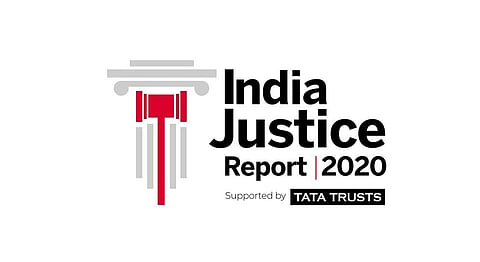

The India Justice Report (IJR) 2022, released recently, highlights some long-standing issues plaguing our law and justice systems, chiefly, pendency of litigation and denial of justice to thousands of undertrials. But even more significantly, the report throws light on the extent of gender and caste imbalances in the system. The report is based on an analysis of data relating to the four pillars of justice delivery: police, judiciary, prisons and legal aid. On all of those facets, there is serious under-representation of women and the weaker sections of society. This predisposes our judicial systems to denying justice to those sections and corrupting the constitutional intent towards them.
Take for instance the gender bias in the justice system: only 13 per cent of high court judges and 35 per cent of subordinate court judges are women. There is no good reason why recruitment levels should be so low despite women’s literacy increasing from 9 per cent at Independence to 77 per cent now. Women’s representation in the police is no better at 11.75%, and among prison staff at 13 per cent. This skew must surely correlate with the high rate of crimes against women in society at large. Of course, this suggests the need to correct this gender imbalance at all levels in all our justice systems, but also to start a thorough scrubbing of our laws and processes to rid them of gender insensitivity. At the current rate, the report says, it would take 24 years to bring women’s strength in the police to 33 per cent.
The report’s findings on social justice indicators too give no cause for comfort. No state in the country has fulfilled its quotas for recruitment of SCs, STs and OBCs in the subordinate or district court level. Karnataka was the lone state to meet these quotas in the police. Much as we might hold the notion that pure justice is caste agnostic, there is a welter of evidence worldwide that justice to the weaker sections is better served when there is adequate representation to them in the police and judicial services.
The IJR further states that Indian prisons are overcrowded at over 130%, with more than two-thirds of prisoners still awaiting completion of investigation or trial. This situation is compounded by the fact that legal aid clinics have decreased by 44% between 2019 and 2021.
India’s justice systems remain plagued by low budgets, with no state spending more than 1% of its total annual expenditure on the judiciary, except for Delhi and Chandigarh. The report flags the issue of vacancies in the police, prisons, judiciary and legal aid services. Among high courts, there is a 30% vacancy of judges. In 28 states, one in every four high court cases has been pending for more than five years. The current backlog of 4.8 crore cases in the judiciary is evidence that little progress has been achieved on speedy disposal of litigation.
While the southern states clearly have better administration of justice systems and therefore achieve high rankings in the IJR, Uttar Pradesh’s ranking at the bottom shows the sorry state of affairs in that state. The best example of this is the killing of a former MP and his brother, who were shot dead in front of TV cameras while under the protection of armed policemen.
Visit news.dtnext.in to explore our interactive epaper!
Download the DT Next app for more exciting features!
Click here for iOS
Click here for Android